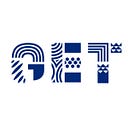
The STEM Education in China: There’s a Long Way to Go
In Feburary 2017, the Ministry of Education in China has announced to officially add STEM education into the primary school curriculum, which is the first official government recognition of STEM education (you know how important the government policies is to the Chinese market ;) ).
When you hear the word ‘STEM education’ in China, what we are referring to is not actually just the Science, Technology, Engineering and Maths, it’s more like a ‘quasi-STEM education’ in a broad term. It includes the STEM subject, the Arts, Robotic, Coding, Critcal Thinking, Creative Education, Makers Education and a very Chinese-characteristic one, Suzhi Education (which means a well-rounded character encompassing health, education, sophistication and nobility), etc.
Geologically and Financially Inequality
Despite the government’s encouragement and support on the development of the STEM education nationwide, only the tier one cities and few tier two cities have included the STEM education and methodologies into their curriculum, such as Beijing, Shanghai, Shenzhen, Chengdu, etc.
The school budgets to build a STEM edu class or to purchase the related equipment heavily depend on the education expenditure of the local government. Given that there are huge differences in the economic development in different provinces and regions, the budget of the local government, therefore, differs extensively.
The levels of understanding of STEM education for public K12 school principals are also different. In many tier 3 and 4 cities, some K12 school principals only have heard of it since last year, not alone bring it to the class. And in rural areas, the penetration rate is even worse.
However, the high-end private K12 schools and international schools have started experimenting the STEM education and designing related curriculum.
The Problems? Or the Opportunities?
Currently, for those schools that do have STEM classes, 58.3% of them purchase their curriculum from an education research organisation or an EdTech company; and only 27.1% of schools design their own curriculum. However, there is a significant shortage of the professionals and experts on STEM curriculum design which requires a higher capability and complexity as well as a multi-disciplinary background. And it’s also very important that the curriculum is systematic and can be blended well with its current subjects.
Another hurdle is the higher requirement for the teachers in K12 schools, which is an issue faced in many countries. In the U.S., there is a nearly 30,000 teacher shortage in 2015.
Overall, before 2017, the STEM education sector in China is a mixture of more than 100 quality and not-so-quality companies. However, after the official recognition of the government in Feb 2017, the market has entered a shuffle stage where only good companies will stay and absorb more market share.
In the next article of our STEAM education series, we will be looking at the main business models and some key players in this industry. Follow us on Medium or subscribe our newsletter to stay tuned for more insightful articles on China EdTech Industry!
Entering the Chinese EdTech market? Seeking the right partners in China? Register your interest here.
JMDedu is the №1 EdTech B2B Media platform in China. Our mission is to support the ecosystem of education technology in China as well as globally. Our network is across education industry — entrepreneurs, investors, startups, educators, business-decision makers, and policy-decision makers.
